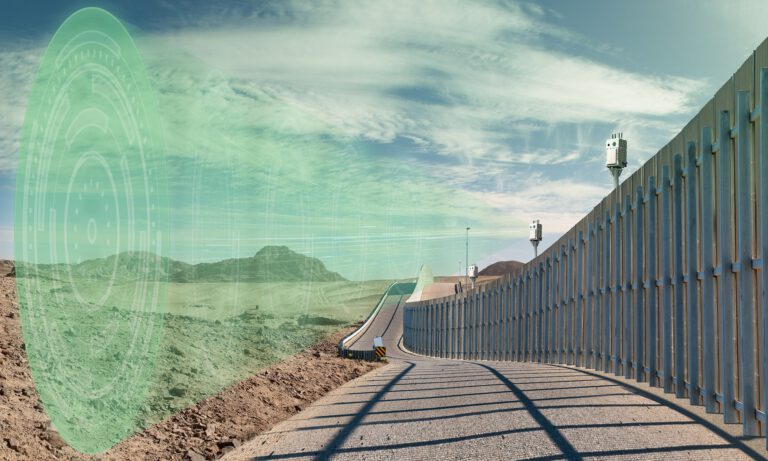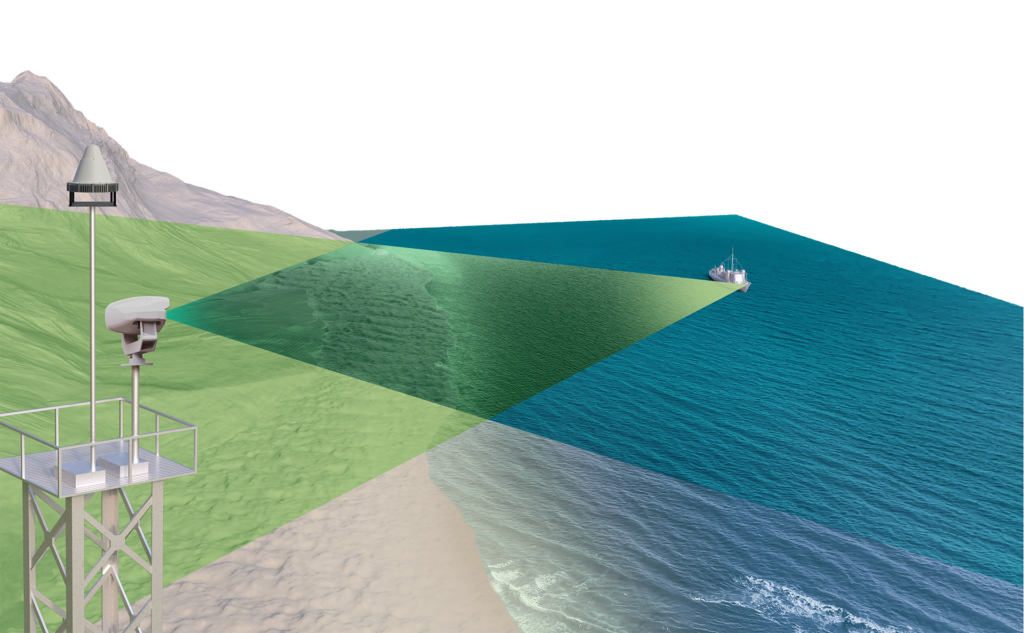Key Threats Countries Face in Border Protection
Political instability, economic hardship, and environmental crises have left many national borders vulnerable to conventional and emerging threats. As security challenges evolve, next-generation border security solutions are crucial for combating illegal migration, contraband smuggling, terrorism, cyber threats, and hybrid warfare. By integrating AI-driven surveillance and multi-sensor technology, nations can strengthen their defenses against increasingly sophisticated threats.”
Illegal Trade Networks: How Smugglers Exploit Border Security Gaps
Drug Trafficking: According to the United Nations Office on Drugs and Crime (UNODC), up to 90% of the world’s cocaine is trafficked via land borders before reaching international markets.
- Weapons Smuggling: Armed groups and terrorist organizations move firearms and explosives through illicit border routes, fuelling regional conflicts.
- Black Market Trade: Illegal traders transport gold, oil, and timber, undermining national economies and funding criminal enterprises. Reports from the World Customs Organization (WCO) show that illicit trade accounts for over 3% of global GDP
Terrorism and Insurgency: How Border Security Gaps Fuel Global Threats
- Borders serve as entry points for extremists planning cross-border terrorist operations.
- Weak surveillance allows radical elements, sleeper cells, and foreign fighters to infiltrate secure areas.
- According to the Global Terrorism Database (GTD), nearly 60% of terrorist attacks worldwide occur within 50 km of a national border.
Hybrid Warfare and State-Sponsored Attacks: The New Era of Border Security Threats
- Cyber-attacks on border security infrastructure disrupt surveillance, communication, and command systems. In 2022, a cyberattack on Albania’s government infrastructure shut down border checkpoints for several hours.
- Drones are increasingly used for smuggling and reconnaissance—Mexican cartels frequently deploy drones to drop drugs over the U.S.-Mexico border.
- False information and digital disinformation weaken border defences and public trust in security agencies.
Climate Change and Environmental Disasters: The Emerging Threat to Border Security
- Rising sea levels and natural disasters create new border vulnerabilities and force mass migration.
- Water and land disputes escalate conflicts between neighbouring nations.
- The International Organization for Migration (IOM) predicts that by 2050, over 200 million people will be displaced due to climate-related disasters, straining border security forces.
The Need for Advanced Border Security
Traditional border protection methods—walls, patrols, and surveillance towers alone are insufficient to savvy criminal networks, state-sponsored actors, and insurgent groups who exploit outdated surveillance technologies to infiltrate security checkpoints.
A report by INTERPOL and EUROPOL highlights that border authorities fail to detect over 60% of illegal crossings in remote areas due to a lack of real-time intelligence.
To combat these evolving threats, nations must embrace multi-sensor integration, AI-powered analytics, and predictive intelligence.
The Evolution of Border Security
Traditionally, walls, fences, and checkpoints were the foundation of border security. However, these physical barriers:
- Ineffective against drones and cyber threats.
- Fail to prevent tunnel-based smuggling operations.
- Are expensive to maintain and easy to bypass.
The Shift to Smarter Border Technologies
In recent years, governments have turned to advanced surveillance systems, including:
- AI-powered analytics for real-time threat detection.
- Integrated multi-sensor surveillance networks.
- Automated response mechanisms for rapid interception.
The European Union’s Schengen Border Surveillance System (SBS) integrates AI-driven sensor fusion across 26 member states, allowing shared intelligence for faster and more effective border protection.

A multi-sensor system integrates radar, EO/IR cameras, thermal imaging, acoustic sensors, seismic detectors, and unmanned aerial systems (UAS) to provide a real-time operational picture of border activity.
Key Components of Multi-Sensor Systems
- Radar Surveillance: Detects moving targets in all weather conditions.
- EO/IR Cameras: Provides day and night high-resolution imaging.
- Thermal Imaging: Detects heat signatures in darkness or obscured environments.
- Seismic & Acoustic Sensors: Identifies underground tunnelling or hidden threats.
AI-Powered Analytics: Predicts threats based on real-time sensor data.
Unmanned Aerial Systems (UAS): Monitors rugged terrain and maritime borders.
The integration of data from multiple sources, and multi-sensor surveillance systems eliminates blind spots, enhances situational awareness, and improves detection accuracy.
Enhancing Situational Awareness with AI
Traditional surveillance systems struggle to distinguish between false alarms and genuine threats, wasting valuable security resources.
- AI-driven predictive analytics can reduce false alarms by up to 70%, according to a study by the Homeland Security Research Corporation.
- A linked radar-EO/IR system can differentiate between animals, humans, and vehicles in seconds, improving response time.
By adopting AI-powered decision-making, security forces can optimize patrol allocation and automate risk assessment.
Beesense's Approach to Securing Borders

As a leader in multi-sensor fusion and AI-driven surveillance, Beesense delivers cutting-edge solutions to address modern border security challenges.
How Beesense Technology Fills Security Gaps
- Omni-coverage multi-sensor fusion eliminates detection gaps.
- AI-powered threat classification reduces false alarms and enhances accuracy.
- Seismic & acoustic sensors detect underground tunnel activities in real time.
Real-World Impact
Beesense’s MANTIS system helped border patrols track and intercept smugglers in sandstorms and zero-visibility conditions.
Beesense integrated multi-sensor surveillance systems provided long-range EO/IR imaging, allowing coastal security forces to intercept speedboats smuggling contraband at night.
The Future of Border Security
As border threats become more sophisticated, outdated security methods leave nations vulnerable. To combat evolving threats, governments, defence agencies, and HLS agencies need to implement scalable, multi-sensor solutions driven by AI technology for faster and more accurate insights in real-time.
Failuring to adapt means allowing criminal networks, and terrorist groups, to exploit security gaps, putting national stability at risk.
Looking ahead, AI-driven multi-sensor border security will define global defense strategies. Countries investing in real-time intelligence, autonomous surveillance, and cyber-resilient systems will lead in national security innovation.
AI-driven analytics, multi-sensor surveillance, and predictive intelligence are essential components of border protection.Governments that prioritise technology investment will not only enhance national security but also optimize operational efficiency and resource allocation.
According to a study form the RAND Corporation, countries that adopt AI-driven border security experience a 30% increase in interception rates while reducing security costs by 25%.
International collaboration—through shared intelligence and cross-border tech integration—will shape the next generation of global security.
The future of border protection is no longer about physical barriers—it’s about intelligent, real-time, and adaptive defence systems that can circumvent emerging threats.
Sources:
‘Paraguay is Key Supplier of Narco-Planes’. https://insightcrime.org/news/brief/paraguay-key-supplier-narco-planes/
Kolozi, P., & Freeman, J. E. (2021). The Political Imagination: Introduction to American Government. https://core.ac.uk/download/519929955.pdf

